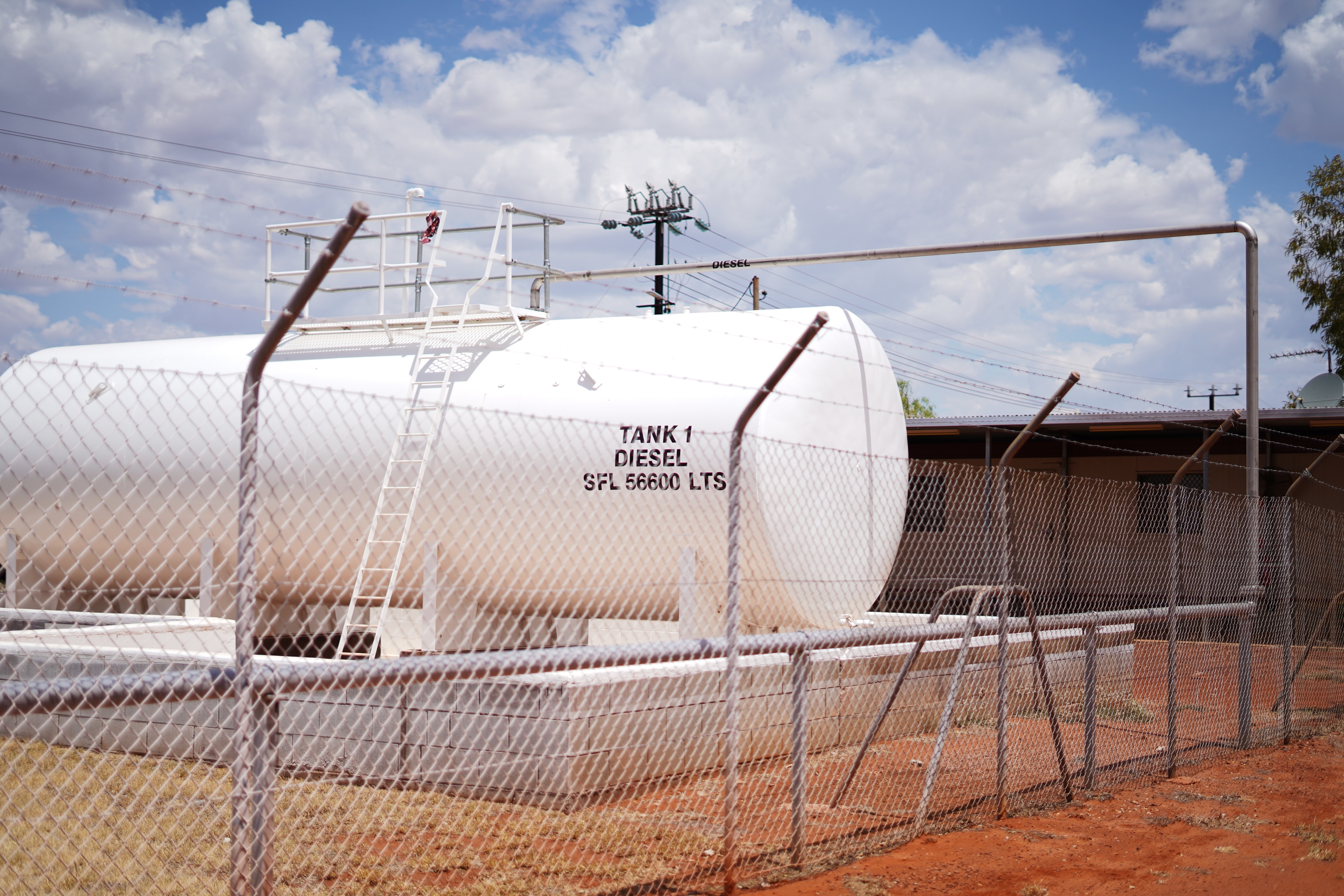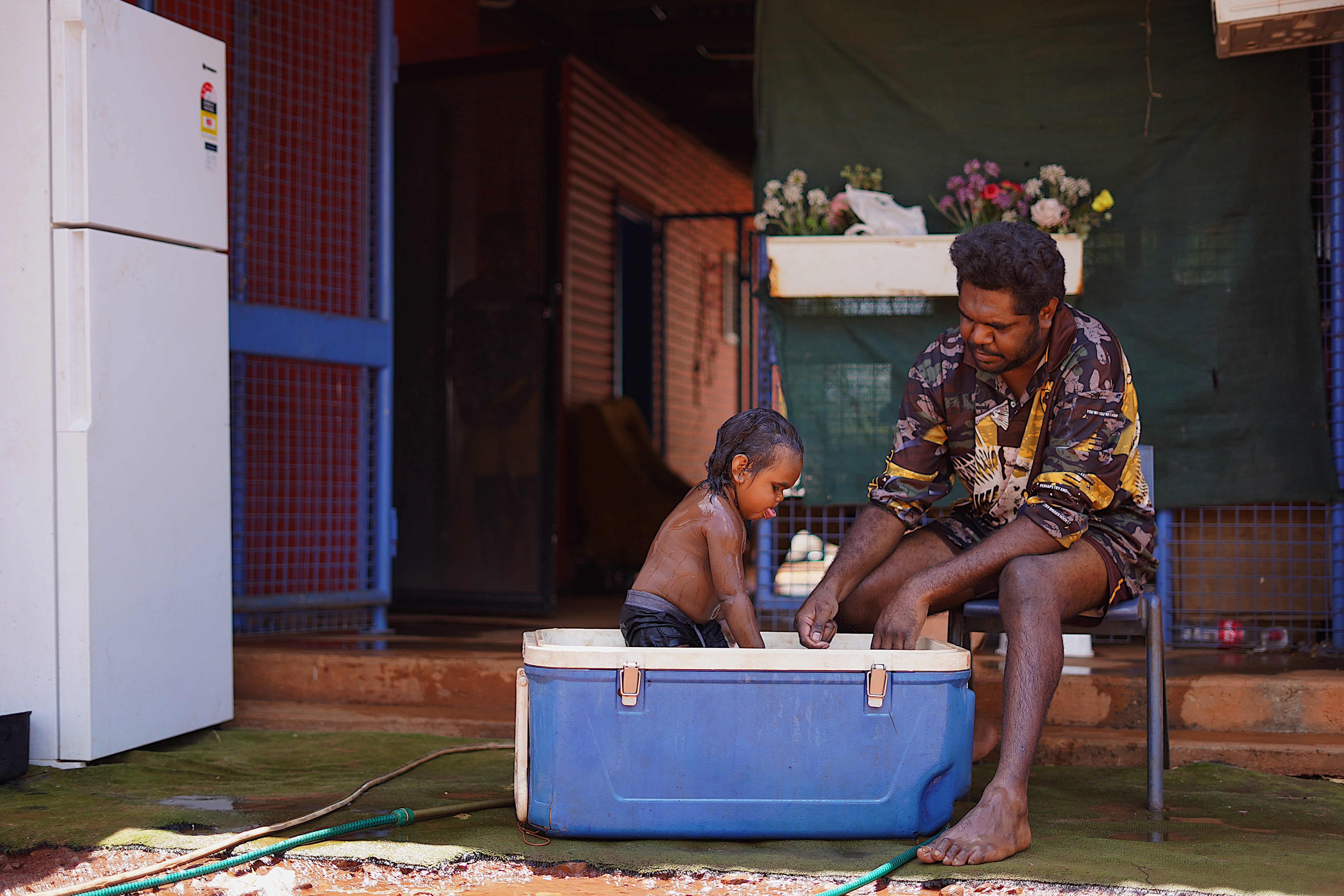Why Australias green energy movement needs to include Aboriginal communities
The Northern Land Council, which represents some Aboriginal groups whose land will be impacted by the project, said in an email that it would “facilitate consultations†about such an agreement, but declined to comment on who from the communities should be approached about proposed projects or what had been done so far. Despite the promise of benefits and engagement, over a dozen people who told SBS News and TIME in late September they have ancestral connections to land in Powell Creek also said they had not been fully informed about the local benefits of the project.
It’s symptomatic of a disconnect that environmental groups say demands urgent attention, with several large-scale renewable-energy projects proposed to be built on Aboriginal land in Australia. “We need to think of ways to configure the world differently,†says Kirsty Howey, the co-director of the Environment Centre Northern Territory, “because what we’ve been doing has created and entrenched not just climate change itself, but gross inequalities.â€
What we’ve been doing has created and entrenched not just climate change itself, but gross inequalities.
- Kirsty Howey, Environment Centre Northern TerritoryAbout 116 square kilometres of dusty scrubland around Powell Creek Station, an uninhabited block of land that was once a telegraph outpost, have been earmarked for Sun Cable’s solar farm, according to the company’s website. Many of the Traditional Owners of that land live in the blink-and-you-miss-it town of Elliott, an hour-and-a-half drive away.
People here take extreme measures to save on power and adapt to the heat. It’s not uncommon for an entire family to sleep in one room so that only one air-conditioning unit needs to run overnight. Others move their mattresses outside, where it’s cooler at night. It’s standard operation to keep flashlights and camping lanterns around the house to use instead of turning on the lights.


Mr Frank hopes he can see more people using the sun to power their homes. Source: Aneeta Bhole
“It’s cooler when you’ve got the lights off … I sit here just under the fan. I’ve got one air-con that I don’t use,†Elizabeth Henderson, a Mudburra woman who lives in the town, said in September as spring began. “I’ve got the windows open, it’s all right.†Outside, there was almost no movement on the streets at midday, as people sheltered from the 36°C heat. Inside, the homes were mostly dark, lit only by the sunlight coming in through open doors and windows.
Elliott is a tight-knit community, and a conversation with one resident about the Sun Cable project quickly turned into a gathering of more than 20, many of whom went between discussing the issue in English and in Jingili and Mudburra, two of several languages spoken in the area. Many were angry that they did not know more about development plans â€" they had heard about a meeting being held in Elliott, but were unsure about dates or how to attend. Some said they’d heard that Sun Cable had spoken directly to a few locals about the plans and meeting, but those locals had not distributed the information to the rest of the community.
“We have a past through Powell Creek; it’s our great-grandmothers’ traditional land and now it’s our land,†said Dan Bostock, 41, a Jingili and Mudburra man. “We are the right people to talk to and deserve to know what’s going on and what’s going to be carried on throughout our land.†Mr Bostock says he did attend one meeting about Sun Cable’s planned location, where he asked company representatives what the local benefits would be â€" he recalls specifically asking whether the project could help provide electricity to the community. He also recalls getting no clear answer.


Dan Bostock says Sun Cable did not give him clear answers about whether the company’s project would help provide electricity to the community. Source: Aneeta Bhole
This sort of discord isn’t inherent in renewable-energy development. Indeed, there are more than 100 medium- to large-scale clean-energy projects operating across Canada that have active Indigenous ownership or co-ownership, and a slew of government policies and programs aimed at helping Indigenous communities access financing. For example, about 1,000 miles north of Vancouver in the shadow of the northern Rocky Mountains, the Fort Nelson First Nation is working to transform an almost depleted natural gas field into a geothermal-energy project. The project is expected to generate up to 15 megawatts of electricity in its initial phaseâ€"enough to power about 10,000 homes.
Read More


Fort Nelson First Nation plans to use excess heat to warm homes in the area and build dozens of greenhouses to grow food during the frigid winter months when temperatures hover around -17°C. “Major projects are one of the few development opportunities that can bring meaningful change to our communities,†says Sharleen Gale, the chief of the Fort Nelson First Nation. “We think that this geothermal project is really a gift from our ancestors, being able to harness the heat from the earth.â€
Across the US border, on the windswept Great Plains, six Native American tribes have formed the Oceti Sakowin Power Authority (OSPA), which is working to bring the first utility-scale wind-power projects to tribal lands. “These are our natural resources, our lands. I think we should have a say over how they’re used,†says Lyle Jack, the chairman of OSPA.


Elliott and Marlinja are currently powered by a diesel plant. Source: Aneeta Bhole
Even elsewhere in Australiaâ€"some 2,000 miles from Elliott, on the Western Australian coast â€" another renewable-energy megaproject is putting itself forward as an example of how the green-energy revolution could develop alongside Aboriginal people. The $75 billion Western Green Energy Hub (WGEH) will take up an area larger than Connecticut, on the traditional lands of the Mirning people. The community has been given a minority equity stake in WGEH, as well as a permanent seat on the board of the consortium running the project. Its corporate charter also includes promises to create “shared well-being,†not to undertake activities on Mirning land that they don’t agree with, and to recognise and try to fix the “historic and ongoing disadvantage†that Aboriginal people face.
Read More


Brendan Hammond, the chairman of the board of the WGEH, says that although there aren’t laws mandating that it partner with the Mirning in this way, he thinks a new playbook is necessary for how project developers engage with local communities. “Legislation is put there as a bare-minimum criteria,†he says. “Our job is to operate not just inside the guardrails, but way, way, way, way, way beyond.â€
Some opposition lawmakers are pushing for legislation to enforce greater cooperation in Australia. Independent federal member of parliament Helen Haines has introduced legislation that would establish an agency to support the development of community-driven renewable-energy projects. It also sets out a requirement for any new large-scale renewable developments to offer 20 per cent of the ownership to local communities. Ms Haines says the plan would ensure that there is “genuine and legitimate consultation with local communities,†but it remains unclear how such communities could afford to put up the funds for that sort of stake in multibillion-dollar projects.


People in Elliott often take extreme measures to save on power and adapt to the heat. Source: Aneeta Bhole
No matter what the law sets out, some business people with experience in mining say it’s simply bad business not to offer wide-ranging benefits to Aboriginal communities when undertaking projects in them.
“There’s lots of agreements in place with mining companies which are very transactional, like, you pay us the money and we’ll just look the other way, and ultimately they fail everybody,†says Bruce Harvey, who spent more than 30 years at mining giant Rio Tinto. For example, he points to plans by foreign developers to build a wind park in Oaxaca, Mexico, which triggered protests â€" and the suspension of the project â€" from Indigenous communities claiming that adequate consultation had not occurred. And on the flip side, he notes how when the company OZ Minerals wanted to develop a copper mine in South Australia, the firm created a comprehensive partnership agreement with the Kokatha People living on the land, and the two groups now work together on a wide range of issues.
Mr Harvey says renewable-energy projects, which may be in operation for decades, have a special responsibility to build better ties with local communities â€" to ensure that sustainability is defined by respect not just for the land but also for its historic stewards. “Presuming that you’ve got a green halo because you’re in a renewable-energy business doesn’t mean you automatically will be doing everything that’s acceptable and right by local people,†he says. “If you’re paying homage to a global concern, very frequently you’re riding roughshod over local concerns.â€
â€" With reporting by Eloise Barry

0 Response to "Why Australias green energy movement needs to include Aboriginal communities"
Post a Comment